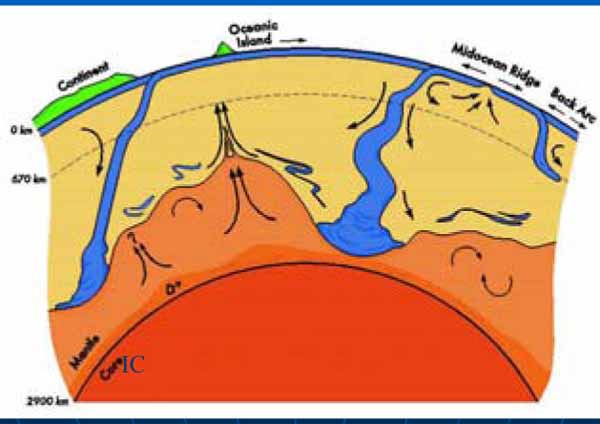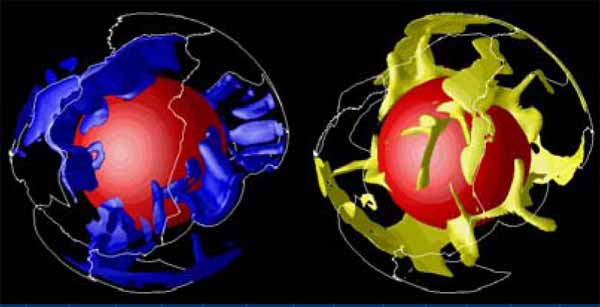
The Earth can be viewed as a massive heat engine, with various energy sources and sinks. Insights into its evolution can be obtained by quantifying the various energy contributions in the context of the overall energy budget.
The current total heat flow at the Earth's surface — 46 3 terawatts (1012 J s-1) — involves contributions from heat entering the mantle from the core, as well as mantle cooling, radiogenic heating of the mantle from the decay of radioactive elements, and various minor processes such as tidal deformation, chemical segregation and thermal contraction
gravitational heating.

A map of the heat flow out of the earth's mantle has been prepared by subtracting the heat flow arising in the earth's crust from the surface heat flow. In continental areas the crustal contribution of the enriched zone is determined from the parameters of the linear heat flow-heat production relationship q0 = q* + bA0 in areas where such data exist.
Where heat flow-heat production data are not available, a new empiricism relating reduced heat flow q* to the mean heat flow of a province , is used to estimate the reduced heat flow, and the depth parameter b is assigned an average value of 8.5 km. The oceanic crustal heat flow contribution includes both heat liberated by cooling, which is a function of the age of the ocean floor, and a small radiogenic component. Continent-ocean differences are more apparent in the mantle heat flow than in the surface heat flow. However, contrasting surface heat flow patterns within continents, such as in central and western Australia, which arise from different surficial radioactivity distributions, do not appear in the mantle heat flow.
Mantle heat flow is positively correlated with the geopotential and negatively correlated with the topography of the earth. However, correlation of heat flow with a "normalized" topography, in which the base line elevation difference between oceans and continents is suppressed is significantly positive, in accordance with observation that ocean floor topography is thermally controlled (
Pollack, Henry N., Chapman, David S. (1977/03)."Mantle heat flow." Earth and Planetary Science Letters 34(2): 174-184.).

